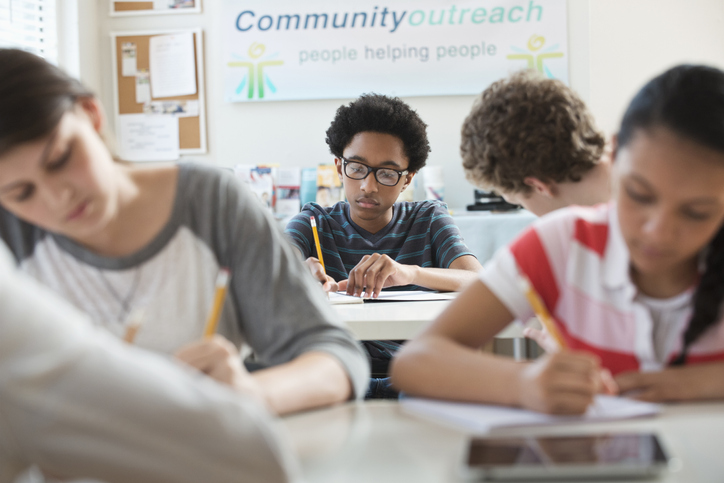 |
| Providing eye exams to students may help to broaden access to vision care and ultimately improve academic performance. Photo: Getty Images |
Kids routinely have their vision checked at school, a valuable way to identify refractive error and early signs of binocular vision disorders. But if school districts go a little further, providing eye exams and glasses directly to students, the effects on their scholastic performance is even better, a new study finds. Researchers recently looked into the effects of these programs on students’ academic achievements in reading and mathematics.
A total of 2,304 Baltimore residents in grades three through seven received eye examinations and eyeglasses and saw improvement over one year, especially those who were female or in special education. Many of these students did not previously have access to any kind of vision care. All were evaluated using a standardized test of reading and math performance called i-Ready.
“Our findings highlighted that students with certain characteristics benefited more from the intervention,” the study authors explained. “Over the course of one year, girls, special education students and those [who performed in the lowest quartile] at baseline obtained higher scores on i-Ready reading, while students in elementary school grades achieved higher scores on i-Ready mathematics.”
The team observed a 0.09 effect size in reading, which is considered medium by benchmark standards. The 0.25 effect size they found in several subgroup analyses was considered large.
“The effect sizes are noteworthy by education standards given the randomized design and study size,” the researchers noted. “It is important to compare the demonstrated benefit of school-based vision care with effect size for widely used educational interventions. The overall effect size of 0.09 in this study is larger than that for other common interventions, with the exception of tutoring. The effect sizes for special education students (0.25) and those [in the lowest quartile] at baseline (0.28) are comparable to those of tutoring for students performing below grade level, the most effective educational intervention known.”
The year-to-year gains on standardized tests ranged from 0.23 to 0.60 in standard deviation. “The effect size seen with eyeglasses would be additive to these expected gains,” the investigators added. “Because learning gains narrow in higher grades, a 0.09 effect size becomes even more impactful for older students.”
Neitzel AJ, Wolf B, Guo X, et al. Effect of a randomized interventional school-based vision program on academic performance of students in grades 3 to 7. JAMA Ophthalmology. September 9, 2021. [Epub ahead of print]. |


